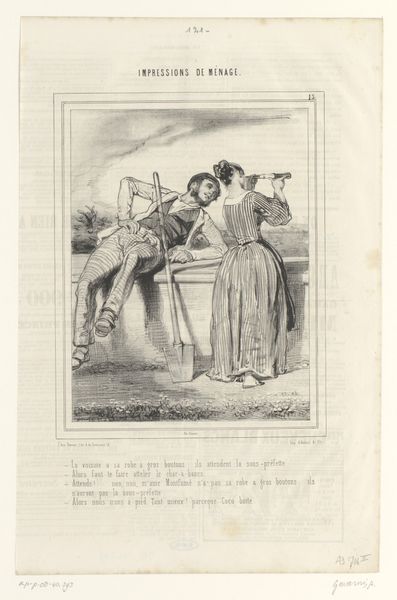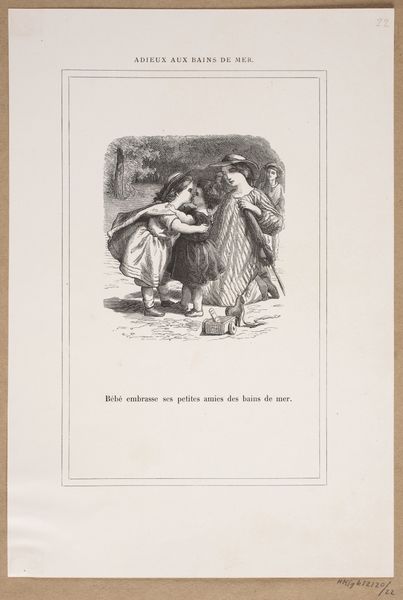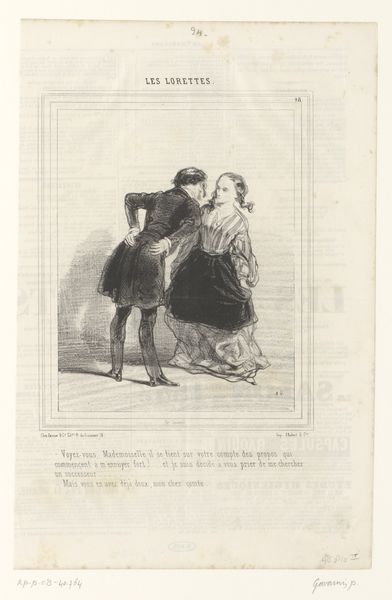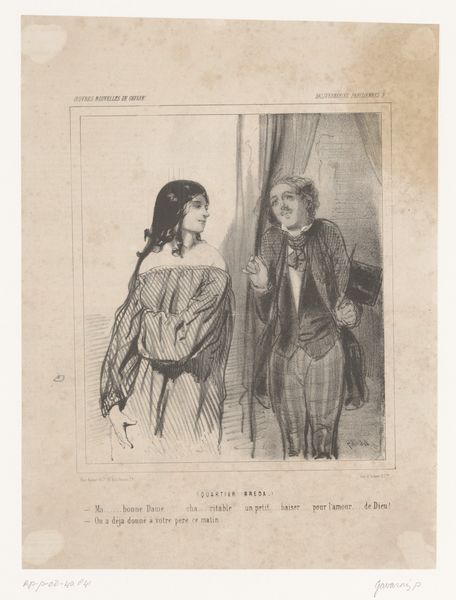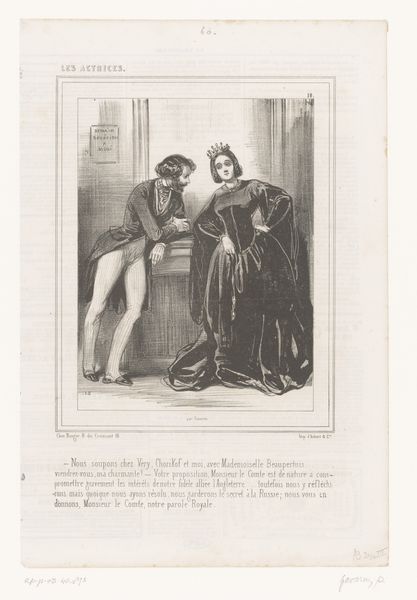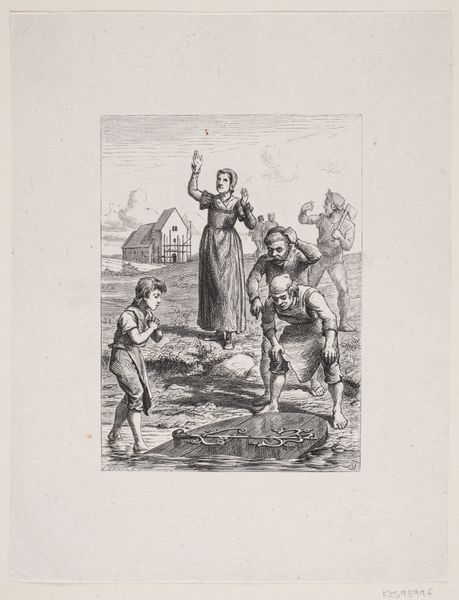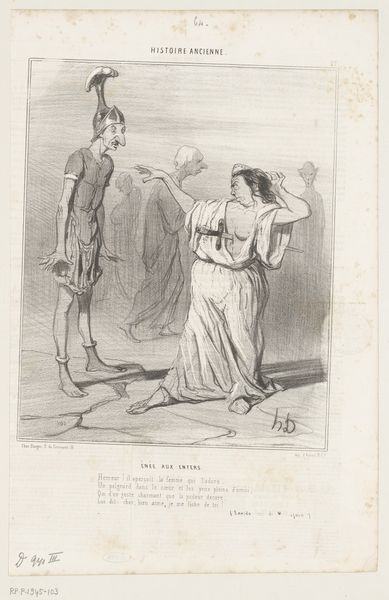
Hamlet and Horatio, from "Le Magasin Pittoresque" 1837
0:00
0:00
drawing, print, engraving
#
drawing
#
narrative-art
# print
#
figuration
#
romanticism
#
engraving
Dimensions: Image: 7 1/2 x 5 15/16 in. (19 x 15.1 cm) Sheet: 11 11/16 x 7 11/16 in. (29.7 x 19.5 cm)
Copyright: Public Domain
This print of "Hamlet and Horatio" was produced in 1852 by Andrew Best Leloir, using wood engraving. This process was common in the 19th century for mass-producing images, especially for periodicals like "Le Magasin Pittoresque," where this piece appeared. Wood engraving is a relief printing technique, where the artist carves an image into the end grain of a block of wood. The remaining raised surface is inked and pressed onto paper. Look closely and you'll see the fine lines and details that wood engraving allows, giving the image a rich texture. Unlike other art forms like painting or sculpture, prints could be reproduced in large numbers, making art more accessible to a wider audience. This democratization of art through printmaking had significant social implications, allowing ideas and images to circulate more freely than ever before. So, the next time you look at a print, remember that it's not just an image, but also a product of labor, technology, and social context, blurring the boundaries between art, craft, and industry.
Comments
No comments
Be the first to comment and join the conversation on the ultimate creative platform.
